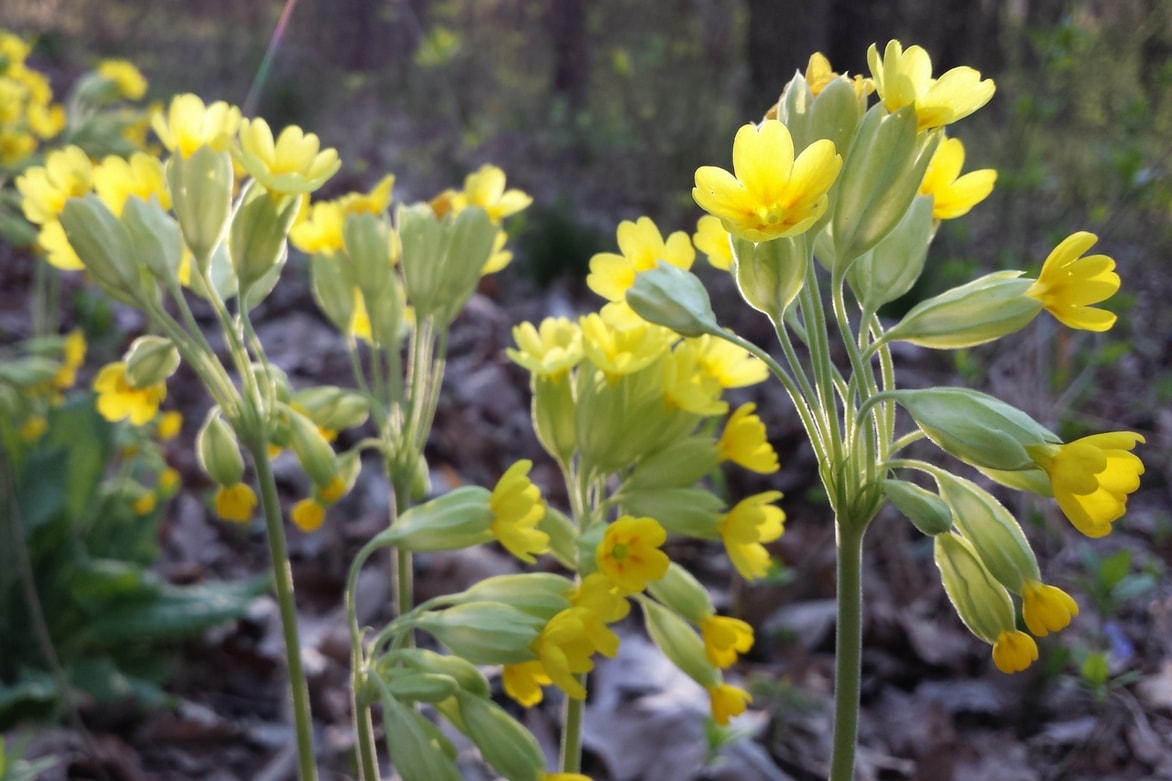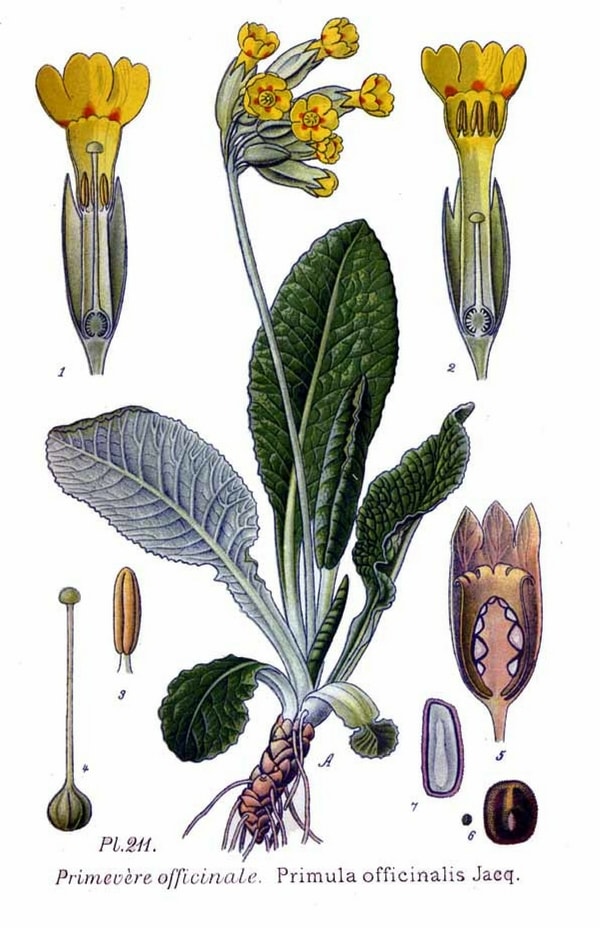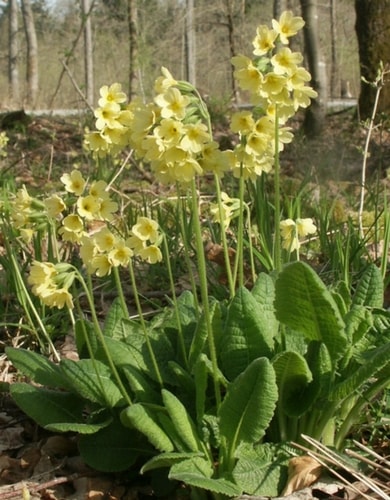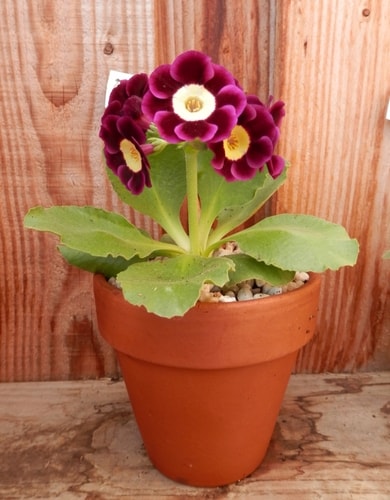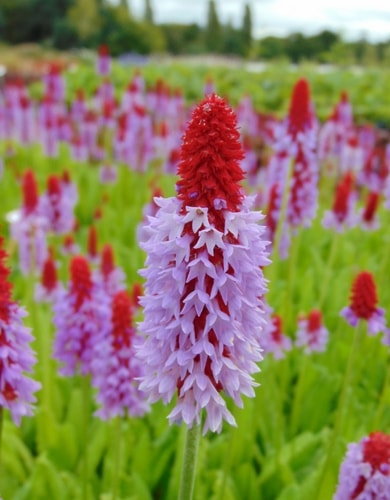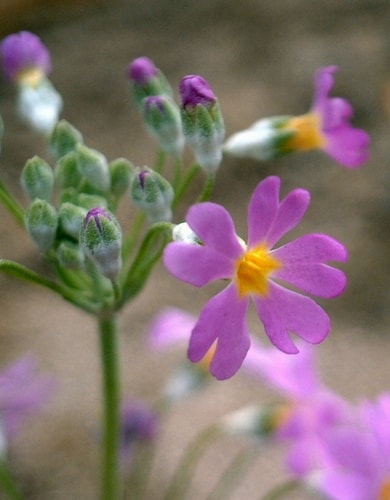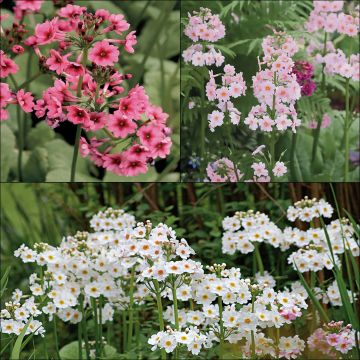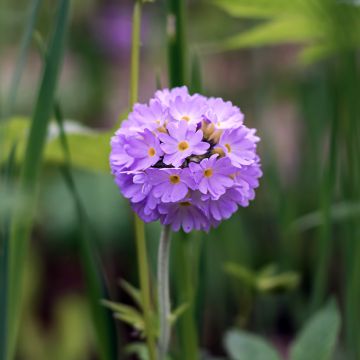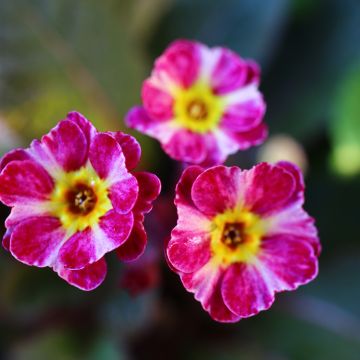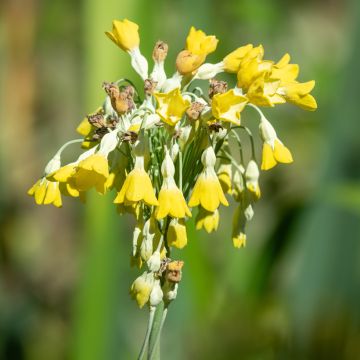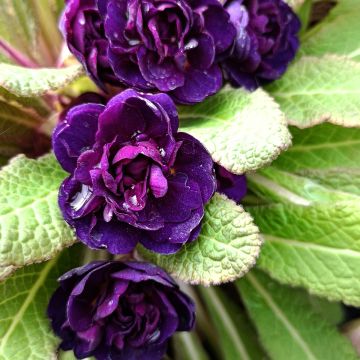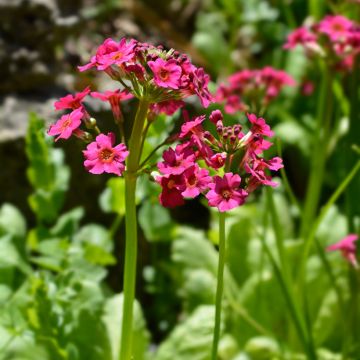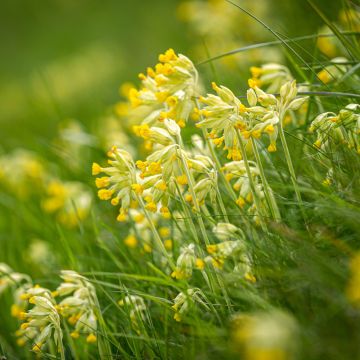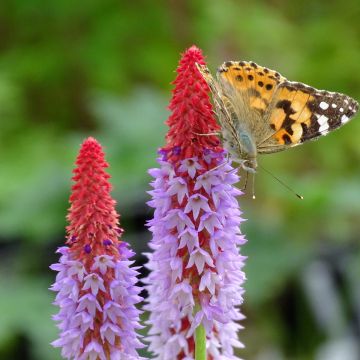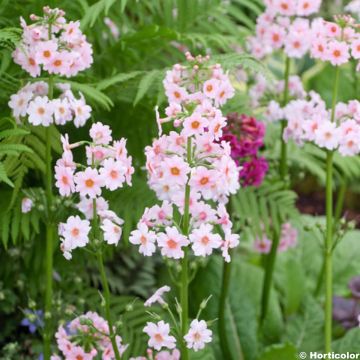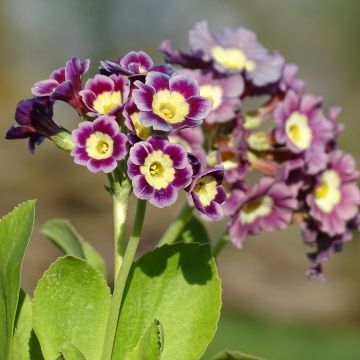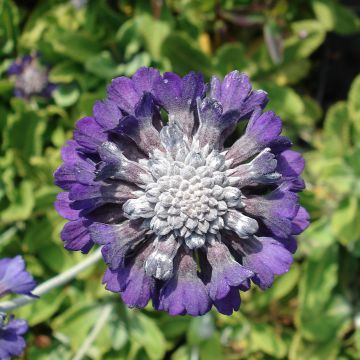
Primrose: Planting, Growing, Care and Companion Planting
Contents
Primroses, in a few words
- A hardy perennial, the Primrose requires little maintenance. It thrives in partial shade, in rich and moist soil
- Offering a wide range of colours, varieties of Primula acaulis and auricula combine very vibrant hues. The botanical species are more subdued and will integrate well in a naturalistic border
- Common garden Primroses are often very low-growing – be surprised by the much taller Candelabra Primroses!
- The most common species, Primula acaulis, flowers in late winter, from February to May. Most varieties have spring or summer flowering
- They suit many situations: some species will thrive at pond edges, others in rockeries, and some even indoors!
Our Expert's Word
The Primrose is a perennial plant that you’ve likely encountered in the wild, at the forest edge or in meadows: the “Cowslip” or Primula officinalis with its delicate yellow flowers atop upright stems. But it’s also common in gardens in its cultivated form, Primula acaulis, where it takes on much brighter colours: often red, pink, yellow, white or blue. It signals the arrival of spring with an explosion of colour! With it comes the end of the harsh season and the garden’s renewal. Its vibrant flowers bring vitality and energy to flower beds.
It often flowers very early in spring, sometimes in late winter (as early as February for Primula acaulis). Asian Primroses bloom later, flowering in summer. When conditions are right, it may also offer a second flowering in autumn. Most species are hardy and require little maintenance.
If you think of Primroses as common, classic plants, prepare to be surprised by the diversity of their forms and colours! If you imagine them as small plants, rarely exceeding 30cm in height, discover the Candelabra Primroses with their magnificent flower spikes sometimes reaching 1.20m! There are hundreds of species with distinct colours and forms, some with unusual blooms, sometimes bi-coloured, even tri-coloured. Each has its own unique style: they can be delicate and discreet, appearing completely natural… and sometimes the exact opposite: they take on particularly vivid colours with almost unreal, even surprising contrasts. These colour combinations, sometimes so strange that one wouldn’t dare pair them, often turn out to be beautiful successes!
Botany
Botanical data
- Latin name Primula sp.
- Family Primulacées
- Common name Primrose
- Flowering from February. In summer for Asian species.
- Height often up to 20-30 cm. But the tallest varieties can reach 1.20 m.
- Exposure partial shade
- Soil type moist, well-drained, humus-rich
- Hardiness down to -15°C
The Primrose is a perennial plant belonging to the Primulaceae family – it even gave its name to the family: Primula. This large family includes around 1,000 species of herbaceous plants, including Cyclamen and Loosestrife.
There are nearly 400 species of Primroses! They are widely distributed across the Northern Hemisphere, with a major diversity centre in Asia. Indeed, nearly half the species originate from the Himalayas: no surprise then that they are quite hardy in our climates. Three species are common in France, which you certainly know. These are Primula veris (Cowslip), Primula vulgaris and Primula elatior.
The flowering of the Primrose often signals the end of winter and the beginning of fairer days. Even its name tells us this: Primrose comes from the Latin primo: first, and vere: spring, meaning it’s one of the first plants to flower in spring. Be careful not to confuse it with the Cape Primrose (Streptocarpus saxorum), whose name is misleading as it has absolutely nothing in common!
Although perennial, the Primrose is often grown as a biennial plant and removed after flowering. Yet it deserves to be left longer in the garden! So once the flowers have faded, leave it in place and it will flower again each year. However, the flowers of horticultural varieties may become paler and less colourful over time.
The uses of Primulas are varied: some species will thrive at pond edges, others in rockeries or indoors. They can be planted in bowls, planters or wide pots.
Primroses are generally rather low-growing plants, rarely exceeding 20 to 30 cm in height. But some species grow much taller. Thus, the Asian Primroses or Candelabra Primroses bear large flower spikes that can reach 1.20 m in height.
The flowers begin to appear very early in spring, sometimes even at the end of winter. The most common (Primula acaulis) flower from February. The Asian species flower a little later, in early summer. If it doesn’t suffer from summer drought, Primula acaulis may flower again in autumn.
Primrose blooms are very varied, both in form and colour. The flowers are often large and rounded, with five petals, or more if they are double-flowered varieties. They are borne on tall stems or remain at ground level. Horticultural varieties combine very vivid colours. They can thus be yellow, red, blue, violet, pink or white, often with a yellow centre.
Although Primroses are rather classic flowering plants, some species display a certain originality! Among them, let’s mention Primula ‘Zebra Blue’ with its astonishing blue and white striped flowers. Primula vialii, on the other hand, stands out with its violet and red spikes, giving it a slightly exotic look. There are also many double-flowered varieties, including Primula ‘Elizabeth Killelay’ which strangely combines red and white.
Primroses have rather ordinary leaves, they are entire and form a rosette at ground level. Their veins are often very pronounced, giving them a wrinkled appearance. Most species have evergreen or semi-evergreen foliage. It is deciduous in Primula japonica, Primula denticulata and Primula vialii.
To better navigate the many varieties, Primroses are divided into three main groups:
- Auricula: they have evergreen, smooth leaves, often whitish and mealy. The flowers are very colourful and contrasted. They can be grown in rockeries.
- Candelabra: Candelabra Primroses bear tall flower spikes, with tiered flowering. They thrive in shade and moist soil. Ideally, plant them near a pond. Their foliage is deciduous or semi-evergreen. This category includes Primula bulleyana and Primula japonica.
- Polyanthus: this is a very important group with a great diversity of flowers. It includes Primula acaulis, the most common Primroses in cultivation.
The Different Species of Primroses
Primroses comprise nearly 400 species. Many varieties with original and highly colourful flowers have been created from Primula vulgaris and Primula auricula. The botanical species also have great ornamental value.
- Primula elatior
This is the Oxlip, a small species quite common in France in woods and meadows, in damp and shady areas. It bears delicate pale yellow flowers. Be careful not to confuse it with the Cowslip, as they resemble each other, but the Oxlip is taller and its flowers are paler.
- Primula vulgaris
Also called Primula acaulis, the Common Primrose, which means “stemless“. Indeed, its flowers are situated directly at the level of the leaf rosette, making it much shorter than other species like the Oxlip or Cowslip. This is the Garden Primrose, the most commonly cultivated species. The flowers of the type species are pale yellow and bloom from February. If the soil remains moist in summer, they may flower again in autumn. Horticultural varieties come in much brighter colours: blue, pink, purple, yellow or red! But they always have a yellow centre to the petals. There are also original varieties with striped or double flowers, like the Primula vulgaris Belarina.
- Primula veris
This is the well-known Cowslip, often called Paigle. It is frequently encountered during woodland walks, along paths. It is quite common throughout France and bears clusters of charming bright yellow flowers. There are some varieties with red or orange flowers, like the Primula veris ‘Sunset Shades’.
- Primula auricula
Called “Bear’s Ear“, this Auricula Primrose offers a magnificent yellow, fragrant bloom in spring. It is a small, rather low-growing plant. Its leaves are rounded and sometimes mealy white. It originates from mountainous regions of Europe.
It has long attracted the interest of horticulturists and collectors, who have created numerous varieties. Most of them are two-coloured, or even three-coloured. They are highly contrasted as the outside of the petals is coloured (purple, red… and sometimes even green!), with a yellow or white circle at the centre. The delineation and contrast of colours is striking. You may love it or hate it, but it certainly makes an impression.
- Primula vialii
Known as the Orchid Primrose, as it thrives in damp, even marshy environments. Plant it by a pond or at the edge of woodland, but always in moist soil. It is very unusual. Its surprising purple and red elongated spike-like flowers give it a slightly exotic appearance. It is taller than most primroses.
- Primula denticulata
Easy to grow, the Drumstick Primrose will charm you with its beautiful flower pom-poms, somewhat reminiscent of Allium blooms. Its rounded flowers are borne on tall stems, giving the plant a very elegant appearance. They come in white, blue, purple or pink shades. It is very robust, and its foliage is deciduous.
- Primula bulleyana
This Candelabra Primrose comes from China. It bears long upright stems with several tiers of very bright, golden orange flowers. This gives it a natural and airy appearance. Its foliage is deciduous. Plant it in rich, moist, even wet soil, in partial shade.
- Primula sieboldii
Also known as Siebold’s Primrose or sakurasô, this is a small primrose native to Siberia, Manchuria, Korea and Japan, where it has been highly prized since the 17th century. It bears a remarkable bloom in pure white, mauve, pale pink or deeper shades. Its petals, sometimes finely cut like lace, make it very delicate and elegant! Its leaves are deciduous. Plant it in moist soil and partial shade.
The varieties
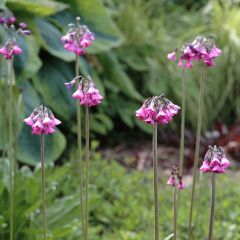
Primula secundiflora - Primrose
- Flowering time July, August
- Height at maturity 80 cm
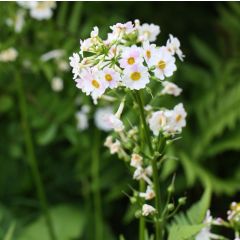
Primula japonica Alba - Japanese Primrose
- Flowering time June to August
- Height at maturity 60 cm
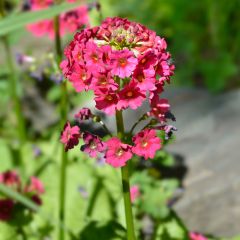
Primula japonica Millers Crimson - Japanese Primrose
- Flowering time June to August
- Height at maturity 60 cm
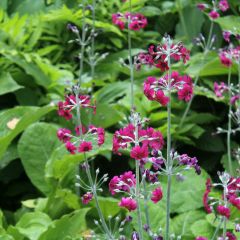
Primula pulverulenta - Mealy Primrose
- Flowering time July, August
- Height at maturity 60 cm
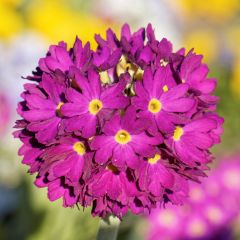
Primula denticulata Rubin - Primrose
- Flowering time April to June
- Height at maturity 40 cm
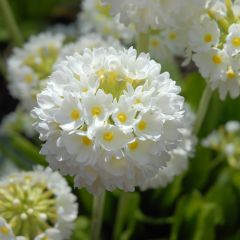
Primula denticulata Alba - Primrose
- Flowering time April to June
- Height at maturity 35 cm

Primula vulgaris Belarina Cobalt Blue- English Primrose
- Flowering time February to May
- Height at maturity 15 cm
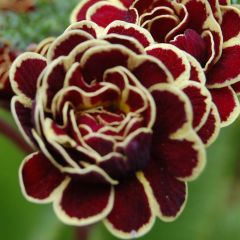
Primula x hybrida Elizabeth Killelay
- Flowering time April to June
- Height at maturity 15 cm
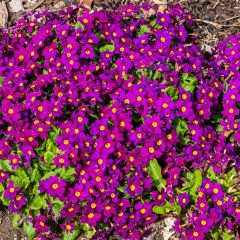
Primula juliae Wanda - Primrose
- Flowering time April to August
- Height at maturity 10 cm
To choose your primroses wisely, follow our advice: “Primroses: Which Variety to Choose”
Discover other Primula - Primroses
Planting
Where to plant?
Grow your Primroses in cool but well-drained soil, rich in humus and organic matter. They dislike compacted, waterlogged or overly dry soils in winter. If your soil is heavy, add coarse sand or gravel to improve drainage. They prefer neutral to acidic soils, though the Common Primrose (Primula officinalis) tolerates chalky conditions.
Avoid full sun! Plant them in partial shade instead – they’re perfect for adding colour beneath trees or at woodland edges. However, Primula denticulata thrives in sunnier spots.
Some varieties flourish near pond margins, such as Primula florindae, Primula vialii or Primula bulleyana. These Asian Primroses particularly love moist soil! As for Primula auricula, plant it in a rockery or container.
Learn more: Growing Primula auricula in pots.

The Auricula Theatre: a charming way to display a Primrose collection – Photo: tpholland
When to plant?
Plant Primroses preferably in autumn, during October or November. Planting can continue until March.
How to plant?
For vibrant clumps of colour, we recommend planting in groups of three to five of the same variety. Avoid overcrowding – their vivid blooms may become overwhelming.
Soak the root ball in a bucket of water to help the plant establish. Meanwhile, prepare the soil by digging with a spade, breaking up clumps and removing large stones. Add compost or well-rotted manure to encourage growth and flowering. For heavy soils, mix in gravel or coarse sand to improve drainage. Dig a hole and position the root ball. Backfill, gently firming the soil with your hands. Water thoroughly.
Once established, Primroses can thrive for up to ten years if disease-free. However, cultivated varieties often lose their vibrancy over time.
Maintenance
We recommend wearing gloves when handling Primroses: they contain primin, a substance that may cause allergic reactions in some people.
Primroses are fairly easy to care for. Apply some fertiliser in late winter to encourage flowering. Horticultural varieties, especially double-flowered ones, require more fertiliser and watering. Regularly remove faded flowers. Divide your Primrose plants every three years to give them more space and prevent exhaustion.
Water once or twice a week if growing Primroses in pots, containers, or indoors. We also suggest watering those grown outdoors, particularly during prolonged dry spells. Ensure the soil remains moist while avoiding overwatering, which could lead to root and crown rot. Consider mulching with a layer of leaves to help retain soil moisture.
Primrose leaves are sometimes nibbled by snails and slugs! Birds also enjoy their sweet-nectared flowers. Primroses can also be susceptible to red spider mites and aphids.
Propagation of Primroses
You can propagate your Primroses by sowing seeds or by dividing clumps, but we recommend the latter technique as it is easier to carry out and quicker than sowing. However, bear in mind that some Primroses tend to self-seed and can naturalise in the garden!
Sowing
Sow under cover in early spring, during March or April. Sowing is a little tricky, but you’ll manage by following a few simple rules.
Primroses need a cold period to break dormancy and germinate. Place your seeds in the fridge for a week. Similarly, if you don’t wish to sow them straight away, store them in the fridge to prevent them from drying out.
Mix the compost with a little sand to create an aerated substrate. It should also be low in nutrients – preferably choose a compost without added fertiliser.
Take a seed tray and place a layer of gravel or pot shards at the bottom to aid drainage. Fill the tray with substrate and firm it down. Sow the seeds, but don’t cover them! Gently firm them in and then water with a fine spray (you can use a mister). Place the tray in a bright, cool spot at a temperature between 10 and 15°C (it should never exceed 20°C). Ideally, place it outdoors in the shade.
The following month, once they have several leaves, you can prick out the young seedlings into pots. Handle them carefully to avoid damaging their roots. You can plant them in the garden in autumn, from September onwards. Ensure the soil remains moist during these operations by watering regularly.
Primroses won’t flower in the year they are sown – you’ll need to wait a year!
Dividing clumps
Divide your Primroses in autumn, from September or October, once the Asian species have finished flowering. Division is possible until March. We recommend dividing clumps every three years to give your Primroses more vigour.
Carefully dig up the plant. Remove excess soil by shaking the root ball. Divide it by separating the roots. Trim the longest roots and a few leaves to balance the plant and encourage new leaf and root growth. Replant in a new location and water generously.
→ Learn more in our tutorial: How to divide Primroses?
Pairing Primroses in the Garden
With their highly varied blooms, Primroses offer endless combination possibilities! Their vibrant colours bring great dynamism to the garden, though they can sometimes feel overwhelming and dominate a space. Use them sparingly, in small clusters, and pair them with plants bearing softer blooms or ornamental foliage such as grasses, ferns, and heucheras.
Asian Primroses fit beautifully into naturalistic borders. They work wonderfully for embellishing the edges of water features. Native species like Primula veris or Primula acaulis also integrate seamlessly into wild and natural gardens, adding a welcome splash of colour in spring.
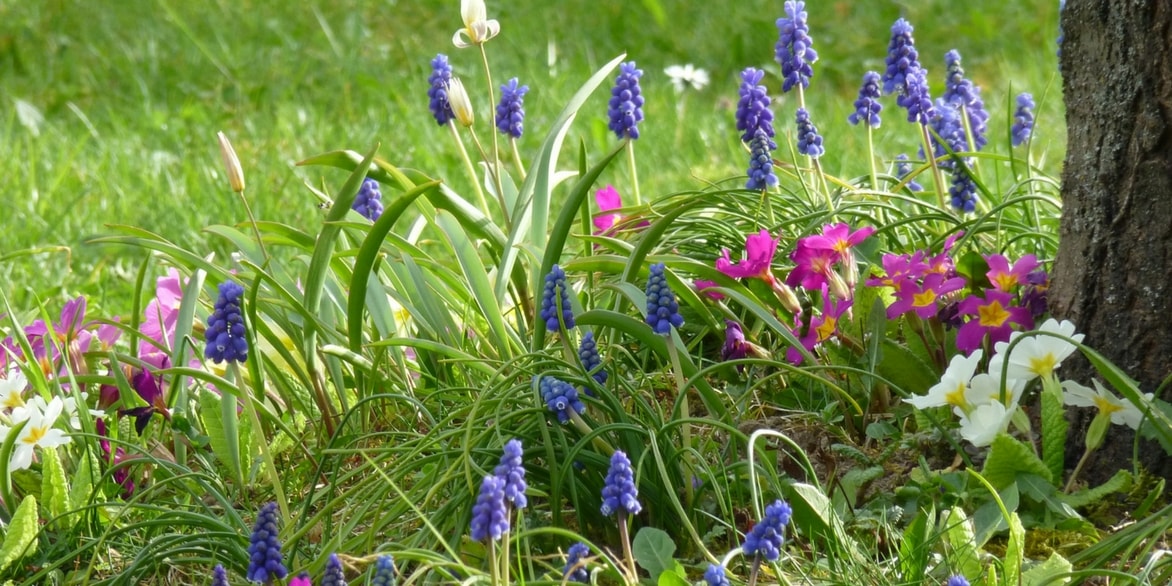
Acaulis Primroses and Muscari: a very natural pairing
They thrive in partial shade, making them ideal for woodland edges, alongside epimediums, persicarias, or ferns. Alpine species like Primula auricula or Primula marginata are perfect for rock gardens, preferring well-drained soils. Plant them alongside saxifrages, stemless gentians, or carex.
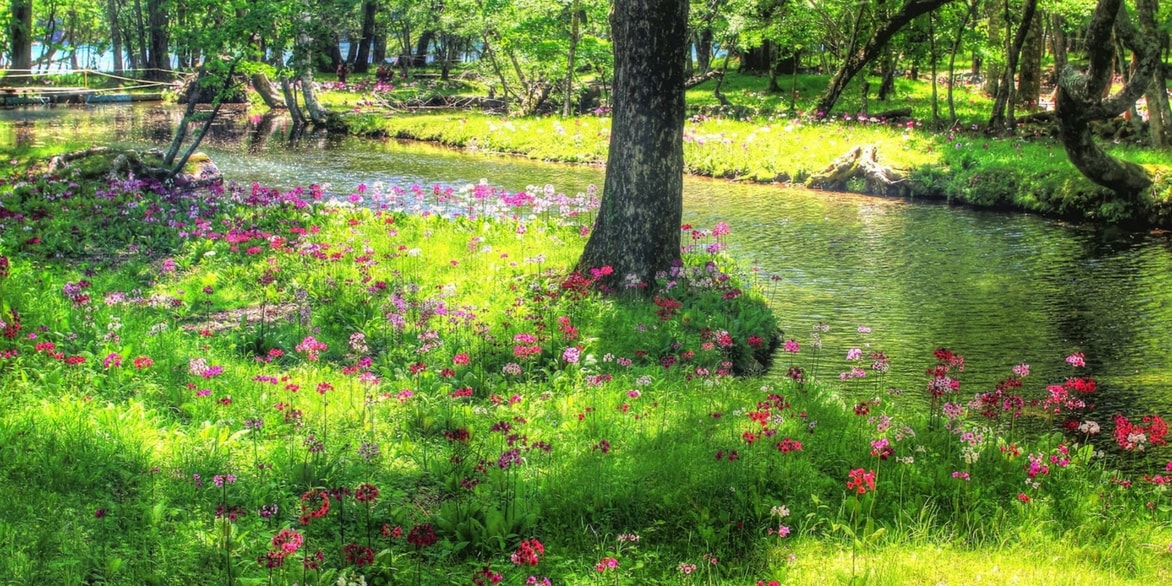
Japan: Japanese Primroses (Primula japonica) in Nikkō (Japan) – Source: Wikipedia
Discover even more ideas in our companion planting guide : “Primroses – 7 Garden Pairing Ideas”
Useful resources
- Our wide range of Primroses
- Video – How to plant perennials
- To complement Primroses, consider early spring flowering perennials
- 8 exceptional flowering primroses
- Colourful primroses!: 7 yellow primroses to grow in your garden ; 8 pink primroses to grow in your garden
- Discover 6 late winter flowering perennials
- Primroses: the easiest to grow
- 7 collector’s primroses to discover
Frequently asked questions
-
The leaves of my Primrose are turning grey and rotting. What should I do?
This is grey mould, a disease caused by a fungus, Botrytis cinerea. This fungus thrives in excessively humid conditions. As soon as you detect this disease, remove the infected parts and reduce watering. Improve ventilation if your Primrose is under cover, and disinfect gardening tools to avoid contaminating other plants. Treat by spraying with Bordeaux mixture. If it's planted in the ground, consider moving it to a location with drier soil. The aim is to prevent waterlogging!
-
Should I remove the plant after flowering?
No, as the Primrose is a perennial, we recommend leaving it in place, as it will flower again for several years! However, if it's a horticultural variety, the flowering may be less impressive in subsequent years.
-
Can I grow Primroses indoors?
Most Primroses prefer cool and airy locations. Not to mention the large Asian species which thrive in moist soils and are not at all suited for indoor cultivation. If you wish to grow Primroses in your home, opt for Primula obconica or Primula malacoides! Remember to water them regularly.
You can also grow Primula auricula or Primula vulgaris in window boxes on your windowsill.
-
Can I plant Primroses in winter?
Yes, outside of major frost periods, planting is possible until March.
-
The leaves of my Primroses appear to have been eaten. What should I do?
It's most likely slugs, which love to nibble on leaves, especially young spring shoots. Protect your Primroses by scattering ash around them to create a barrier. You can also try deterring slugs with used coffee grounds.
- Subscribe!
- Contents

































